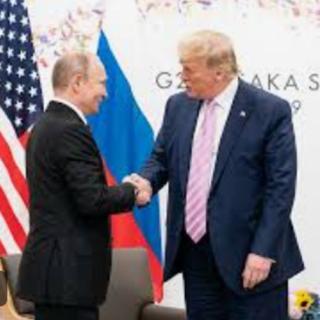Advertisement
Thomas Crooks left no manifesto or suicide note. He had a limited presence on social media — unimaginable for a member of Gen Z. Although he was a registered Republican, he did not display strong political beliefs or radical ideology. Indeed, more than a week after he tried to assassinate former president Donald J. Trump at a rally in Pennsylvania last month, the 20-year-old Crooks was being described by authorities as an enigma whose motivation for the shooting remained elusive.
But Crooks is no cypher at all; he shares nearly every characteristic of other mass shooters: smart, quiet, isolated, bullied, fixated on internet gun violence (he watched the YouTube channel Demolition Ranch) and with easy access to a family member’s gun. The shooting at the rally, in which one person died, two were critically injured and Trump was grazed by a bullet, is another catastrophic example of easy access to semiautomatic guns by lonely, disconnected young males in our country. And it begs the question: when will we begin to look beyond practical solutions like stricter gun laws to the more foundational, hidden, psychological aspects that turn disaffected young men into shooters?
I spent fifteen years studying the deeper spiritual and psychoanalytic origins which underlie mass shootings and terrorism. My research found that the perpetrators of mass shootings, who often suffered from untreated psychiatric illness, were as children psychologically discarded by society. In many cases, their inborn social awkwardness causes them to separate from peers for self-protection, which only makes them a greater target for ridicule, manifesting the outcome they most fear.
Although no single factor predicts becoming a mass shooter, my research repeatedly found that there is a complex combination of biological, psychological and sociological factors that lead to a pathway of violence. Crooks’s harsh childhood background of shame is not unfamiliar in many of these perpetrators. His classmates teased him over being skinny, his body odor and strange behavior of being a loner and wanting to disappear, going so far as to call him the next school shooter. Highlighting a chronic history of exclusion, Crooks was rejected from his high school gun club because he was deemed not a good shot. Isolated adolescents like Crooks don’t learn coping strategies and healthy conflict resolution. When they get angry, they are likely to become overwhelmed and lash out in violent ways. The unvoiced anguish accumulates and implodes into a fire ball of violence.
In the case of Crooks, the accumulated rage of an unrecognized, humiliated, silent child metastasized into a desire to carry out a political assassination indiscriminately. According to F.B.I. officials, his internet search history included not only Trump but President Biden, Attorney General Merrick Garland and the date of the Democratic National Convention in Chicago. The warning signs were there, but not recognized. Worse, they were not addressed by school officials or Crooks’ family.
The message Crooks posted to a gaming platform — “July 13 will be my premier, watch as it unfolds” — can be read as a desire for a grand moment in which he wakes up his ambivalent audience to star in a performance that demands attention. The Santa Fe High School shooter also left chilling journal entries that he was sick of being treated as a second class citizen, tired of people thinking they can get away with treating him as a lesser person, and others are about to get burned. Crooks’ violence is a misguided compensation to overcome a sense of psychological impotence that is so often experienced by these mass shooters. Many domestic mass shooters are unable to process their feelings of helplessness. Instead, they arm themselves to feel more powerful and displace their feeling of terror into their victims.
Let me introduce another overlooked essential variable. Since 2020, gun violence has been the number one cause of death of children and adolescents in our country. One of the best predictors of gun violence is access to guns. Crooks’ father owned more than a dozen firearms, including the semiautomatic AR-15 rifle used in the attack, which the son bought from the father. Similar to Crooks who was part of a local gun club with his father, a number of adolescent mass shooters (including the Parkland High School, Thurston High School and one of the Westside Middle School shooters) were members of gun clubs. Instead of teaching our children how to fire a gun, we should focus on investing in resources to gun policies that will reduce gun-related deaths and invest in strategies to support healthy child development.
FBI officials have said that Crooks’ online searches included the term “major depressive disorder.” This lethal combination — possible undiagnosed psychiatric illness, social isolation and easy access to guns — causes some adolescents struggling with suicidal thoughts or revenge fantasies to turn their thoughts into reality. Because their brains are not fully developed, they are more at risk to act out their violent thoughts without clearly thinking through the irreversible and horrifying consequences.
We neglect these shunned children at our own peril. We regularly check our children’s eyes and ears in schools, but do not assess their mental health. In contrast to private schools where mental health professionals are available, public schools offer young men like Crooks little access to mental health treatment. We need more mental health resources in our public schools to deter bullying, identify and psychiatrically treat those suffering with mental health illness.
There is an urgent need for more of an interdisciplinary approach involving families, school counselors, law enforcement, and mental health workers to identify those who are isolated and suffering with mental illness who may be a risk to themselves and others to secure appropriate psychiatric treatment.
We argue endlessly about gun policy in America. But the simple act of reaching out to those who are marginalized may be enough to stop the next mass shooting.
-------------------------------------
Nina Cerfolio MD, Assistant Clinical Professor of the Icahn School of Medicine at Mount Sinai, is an expert on trauma and terrorism and a board certified, psychiatrist and psychoanalyst in New York City. Her new book, Psychoanalytic and Spiritual Perspectives on Terrorism: Desire for Destruction weaves her team’s cutting edge research with her first-hand experiences of being a first responder to explore a more expansive understanding of the origins of terrorism.



